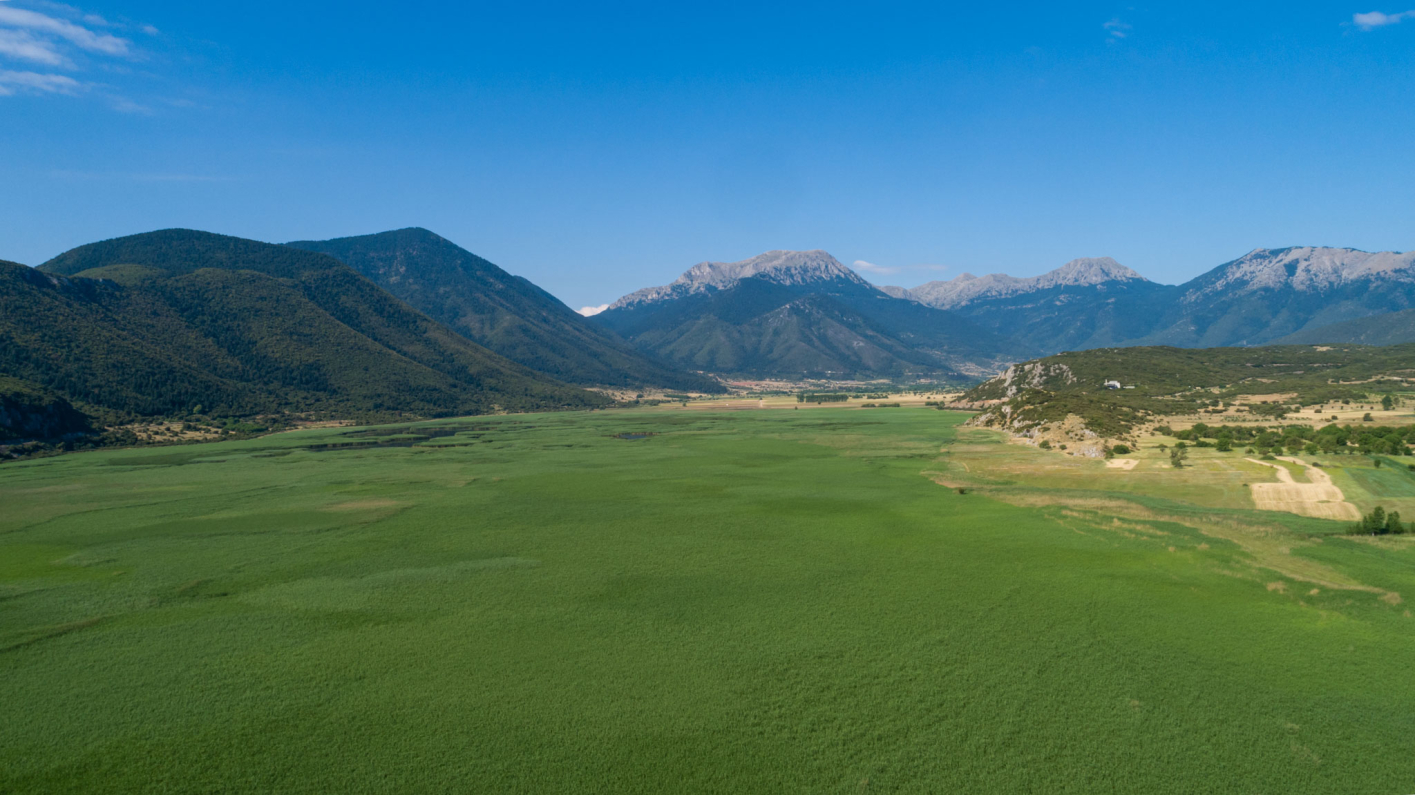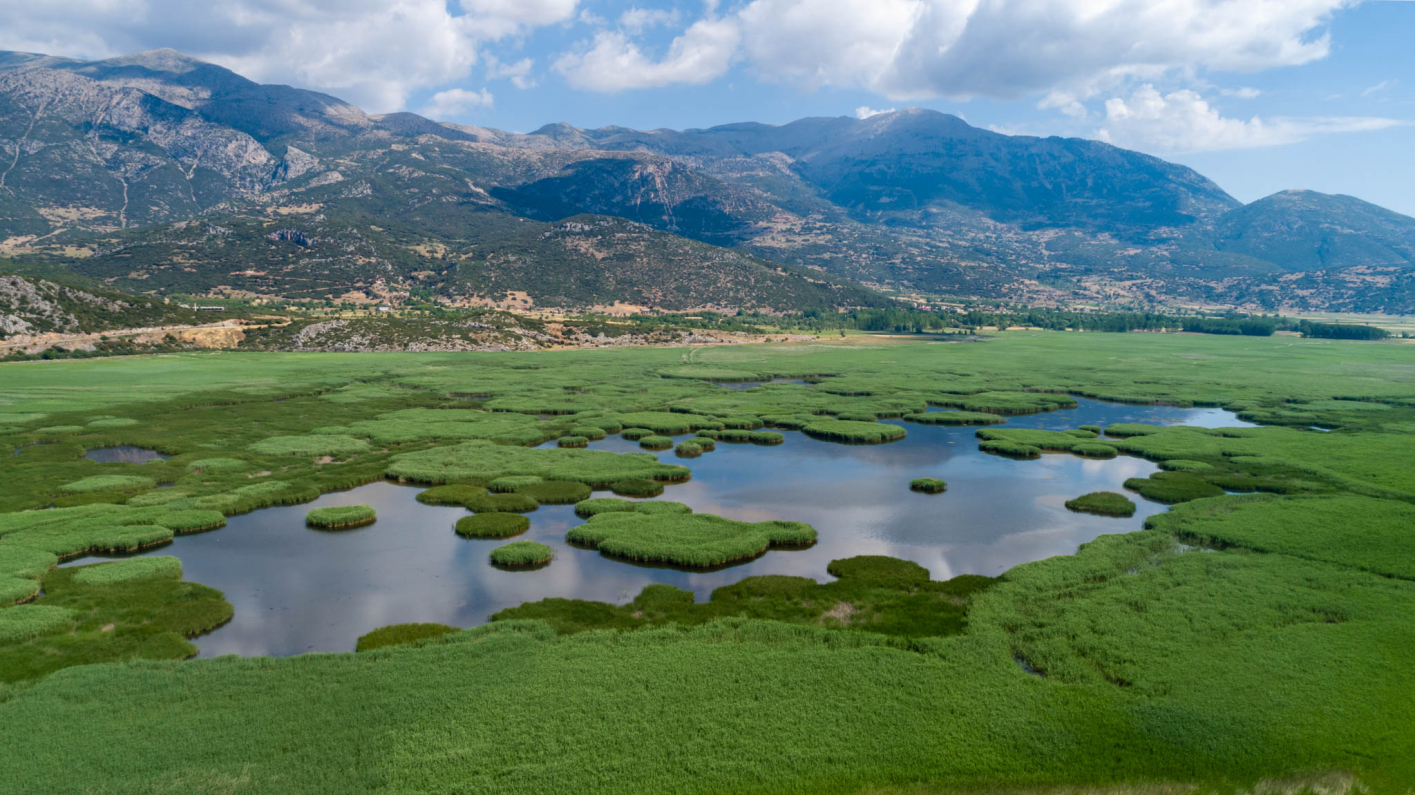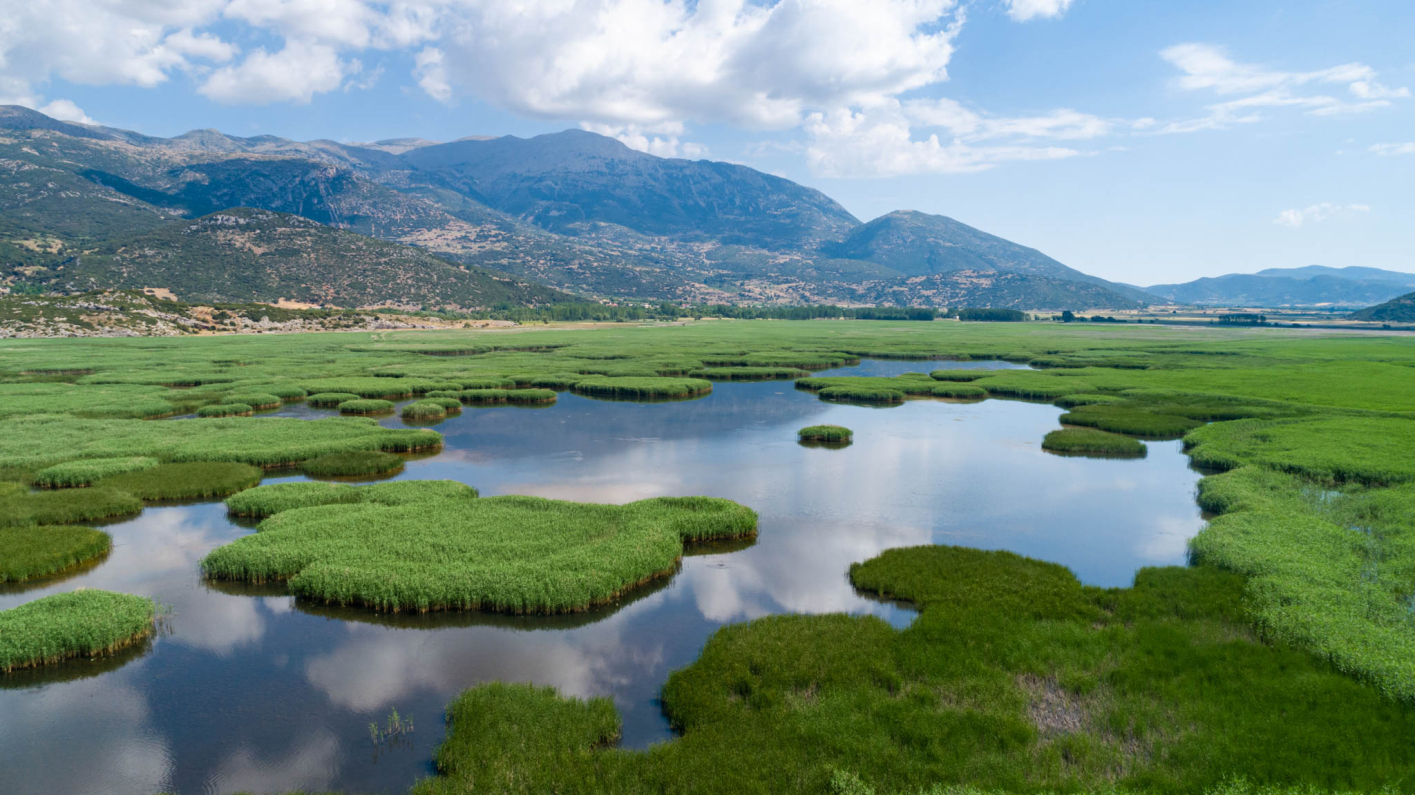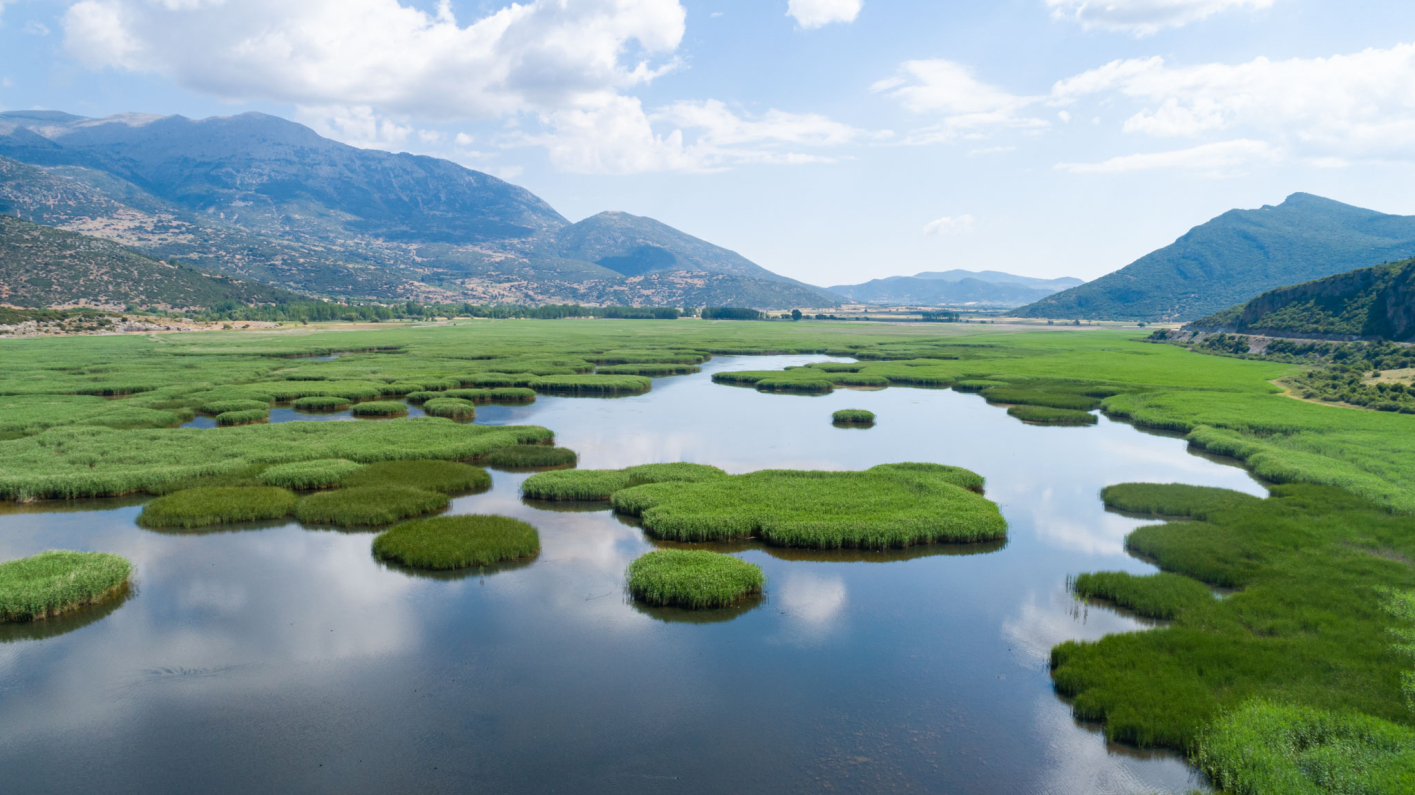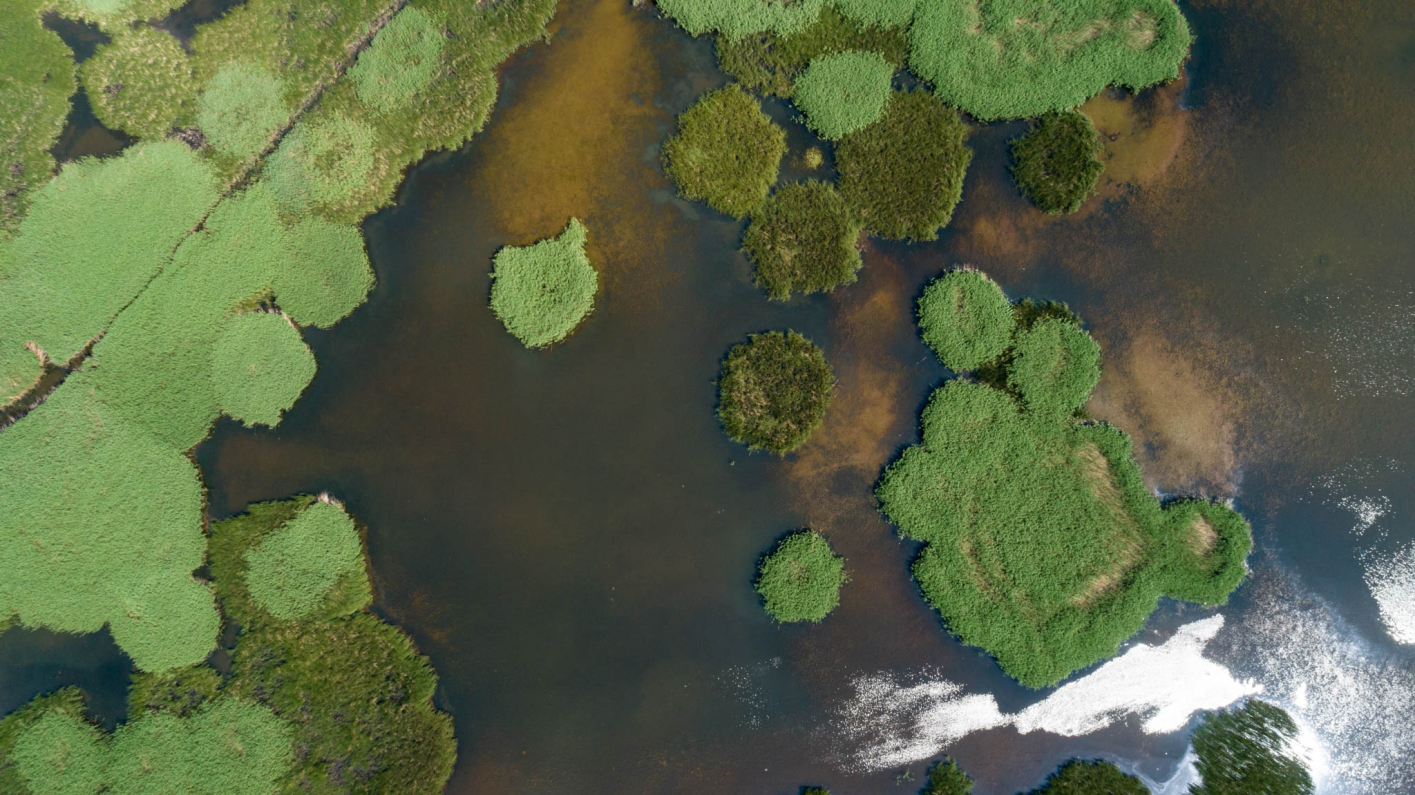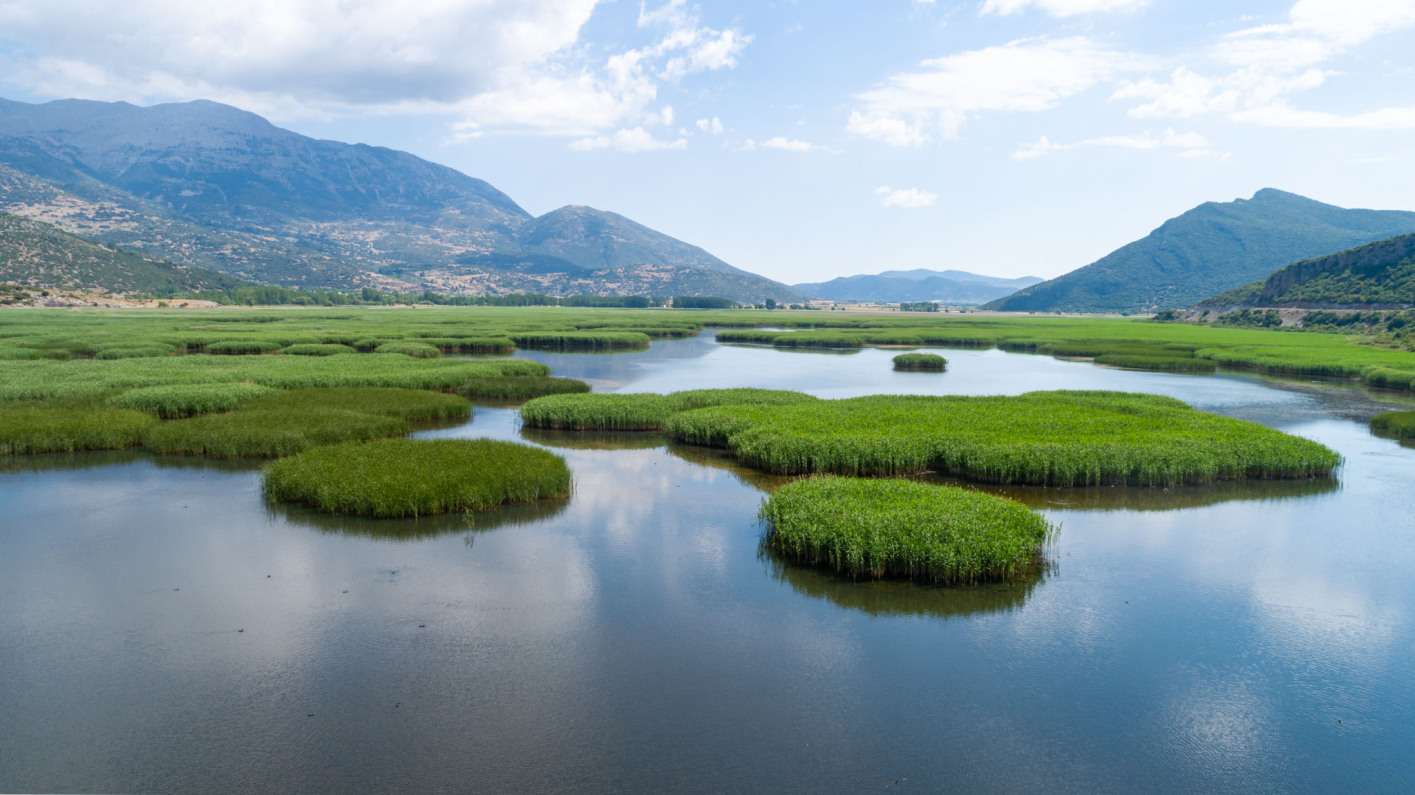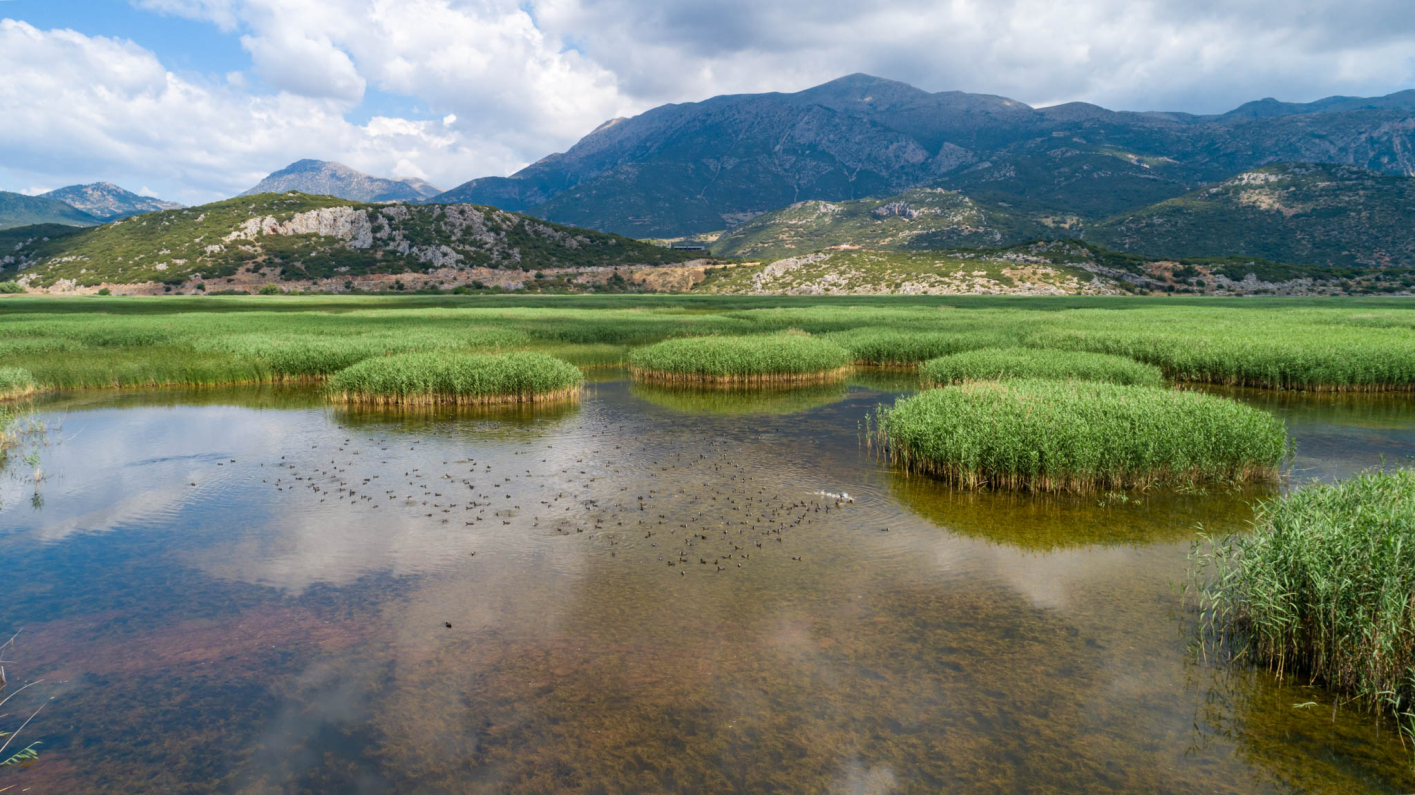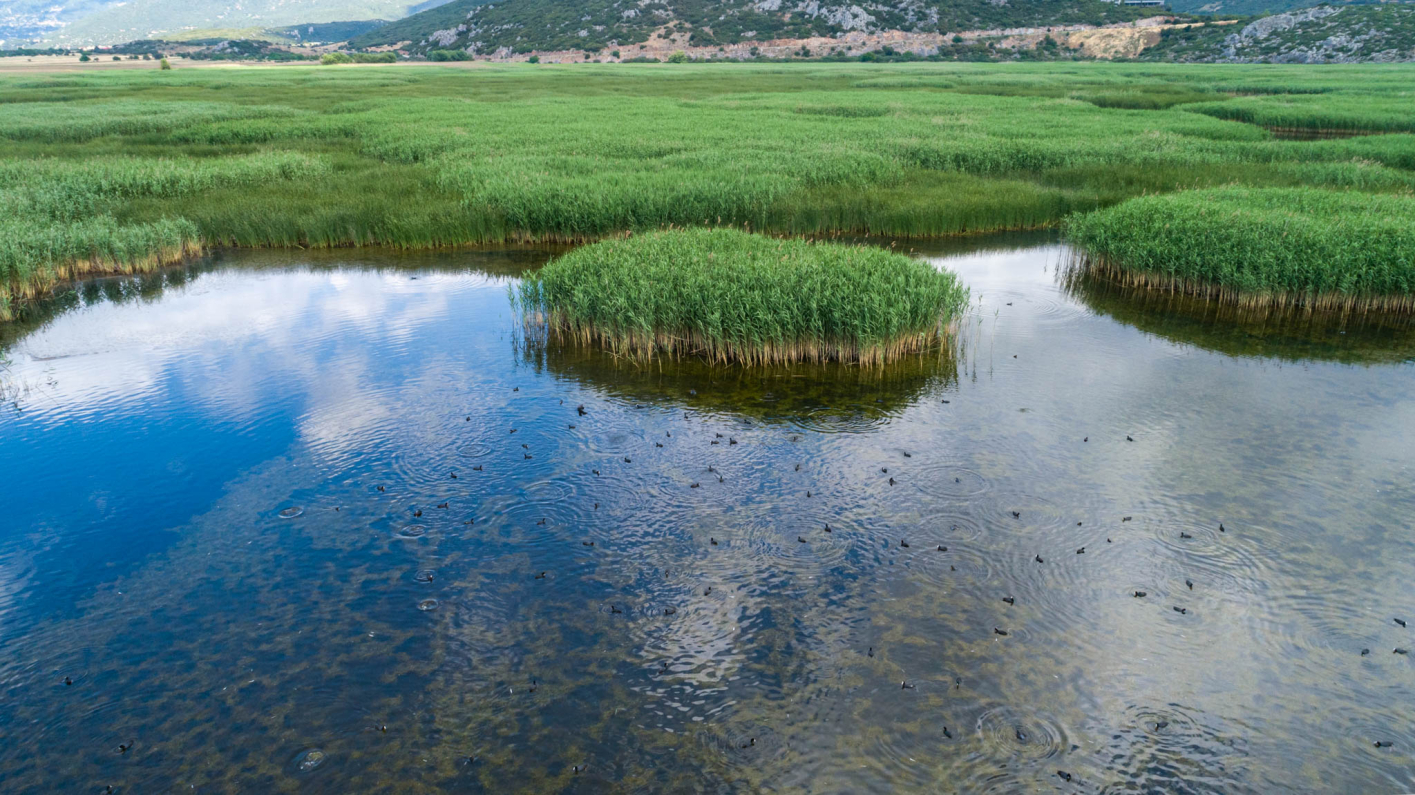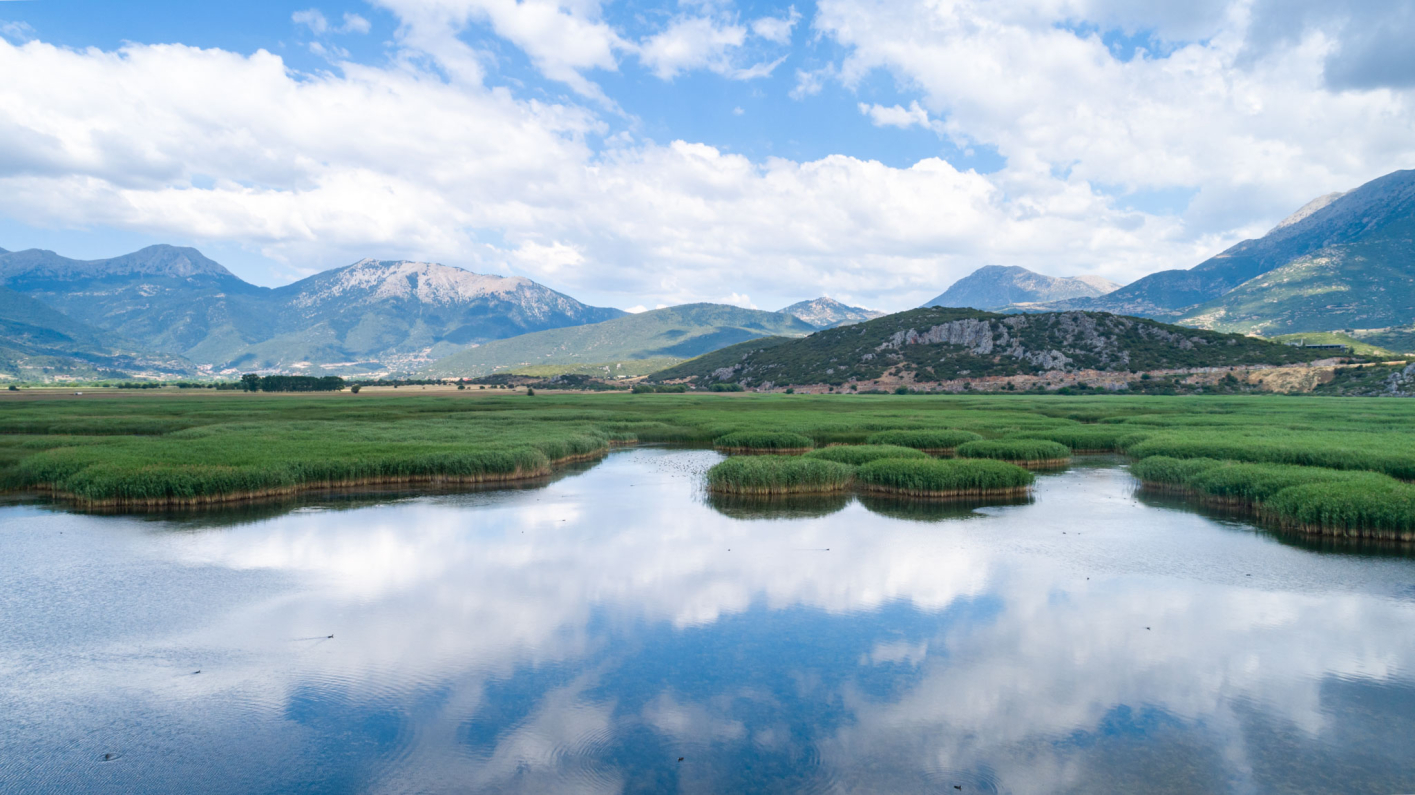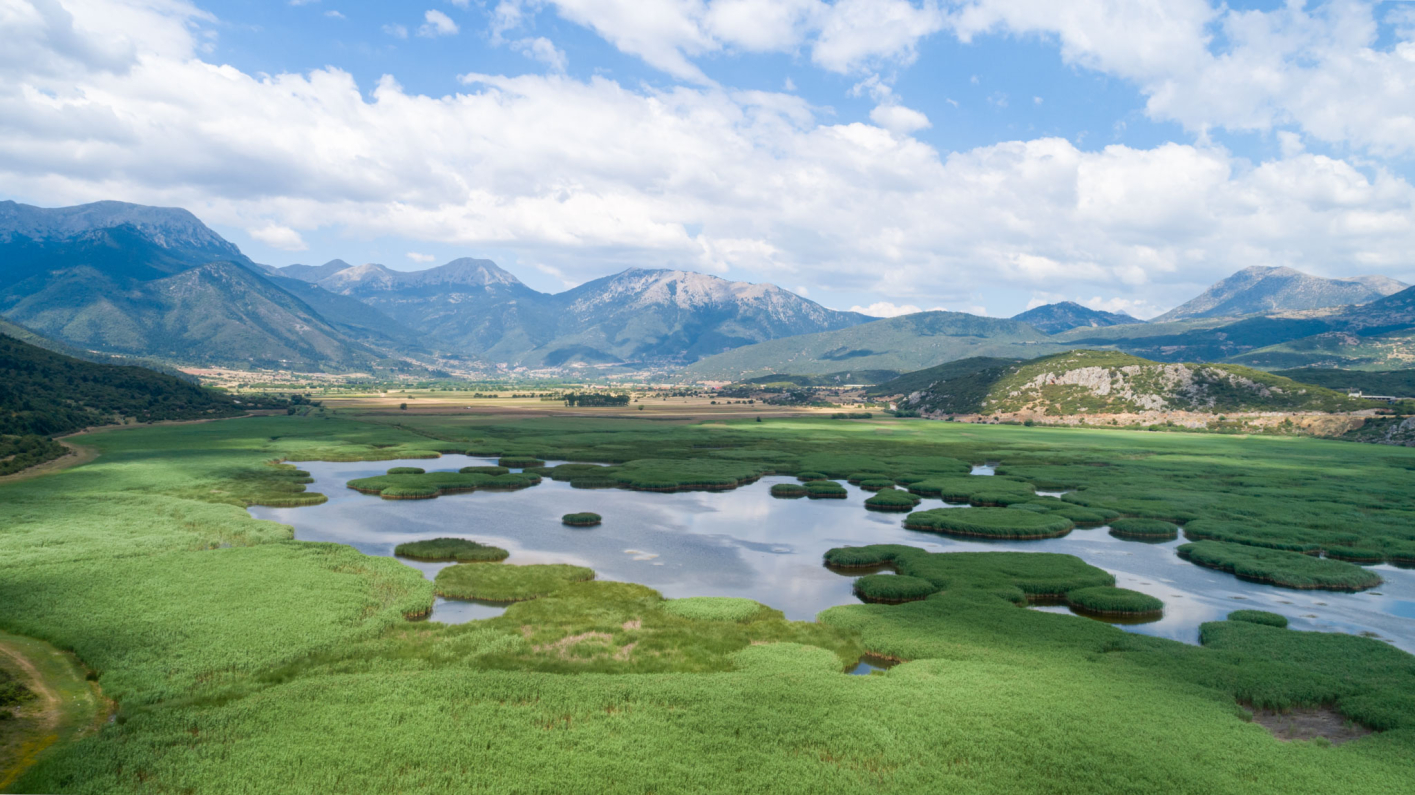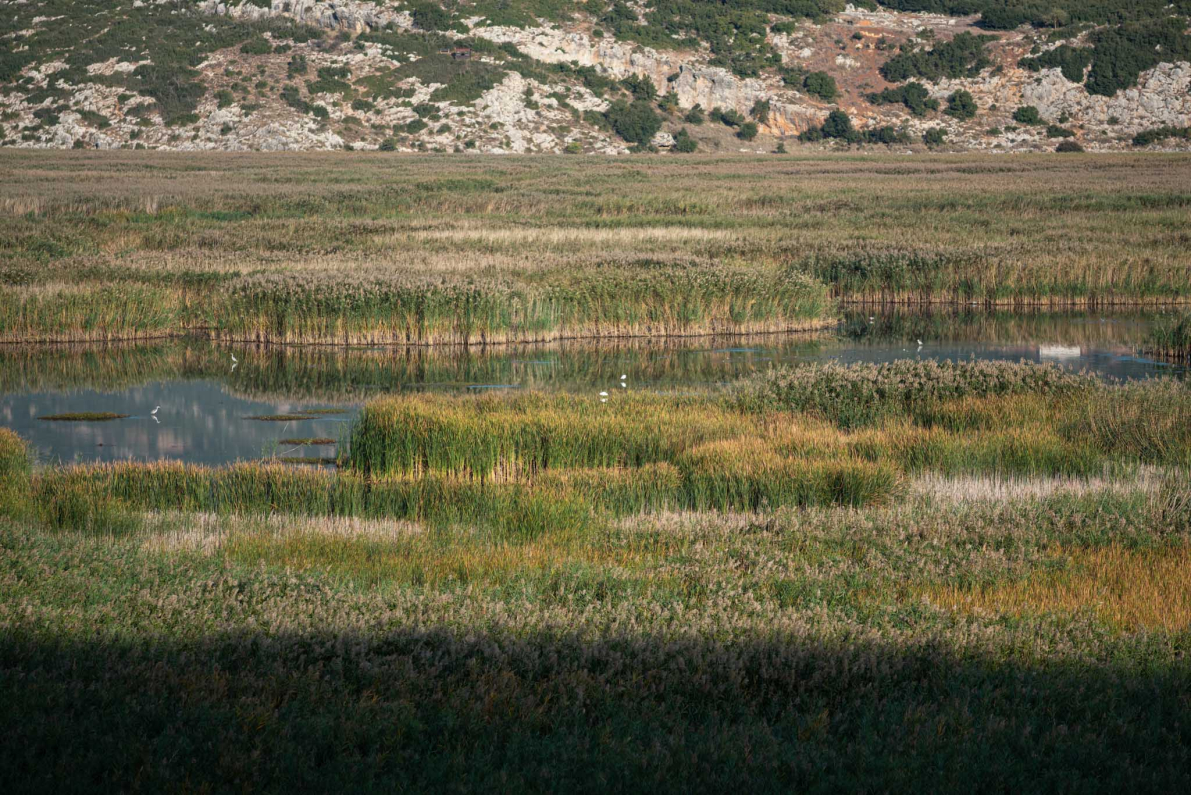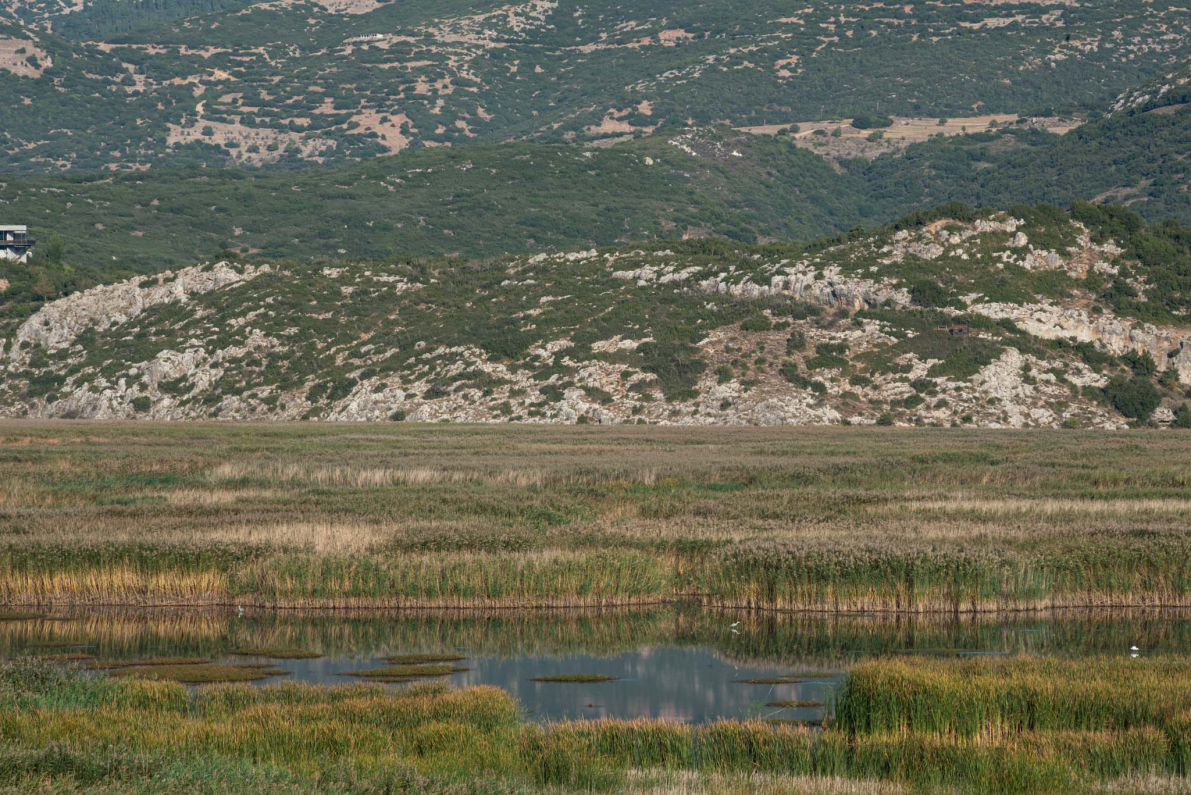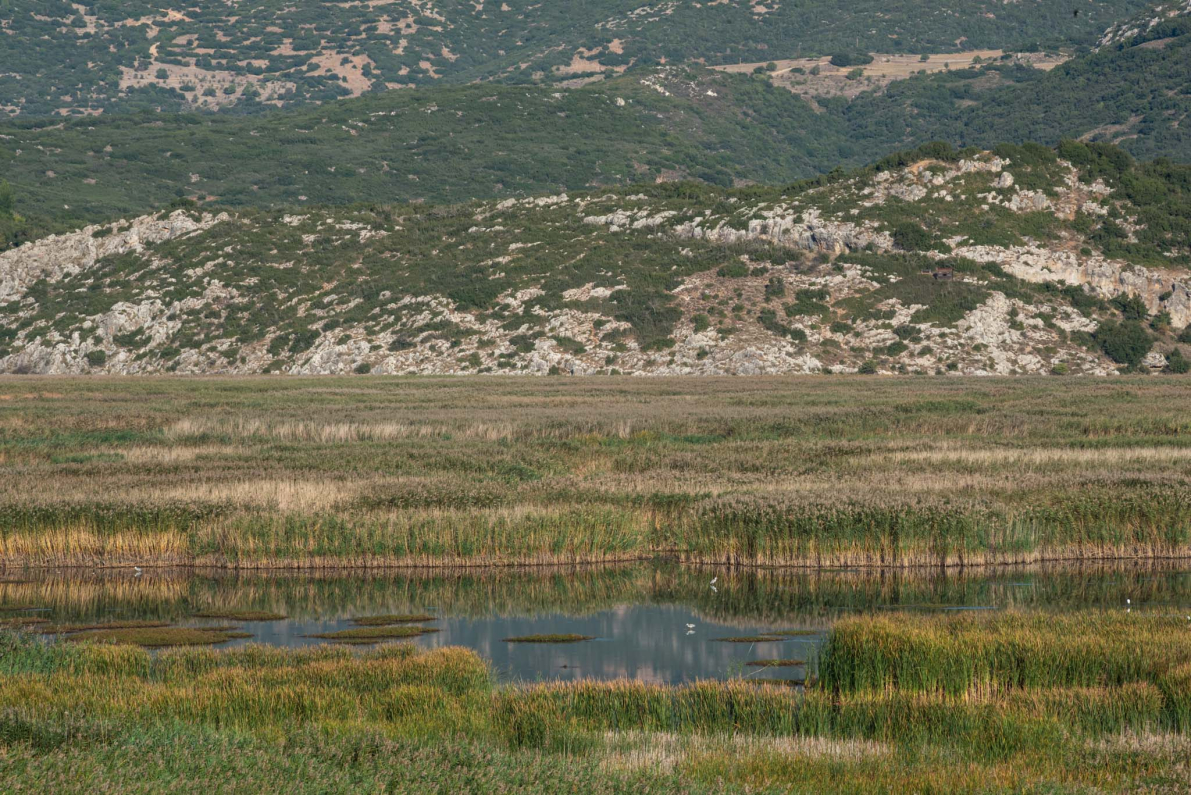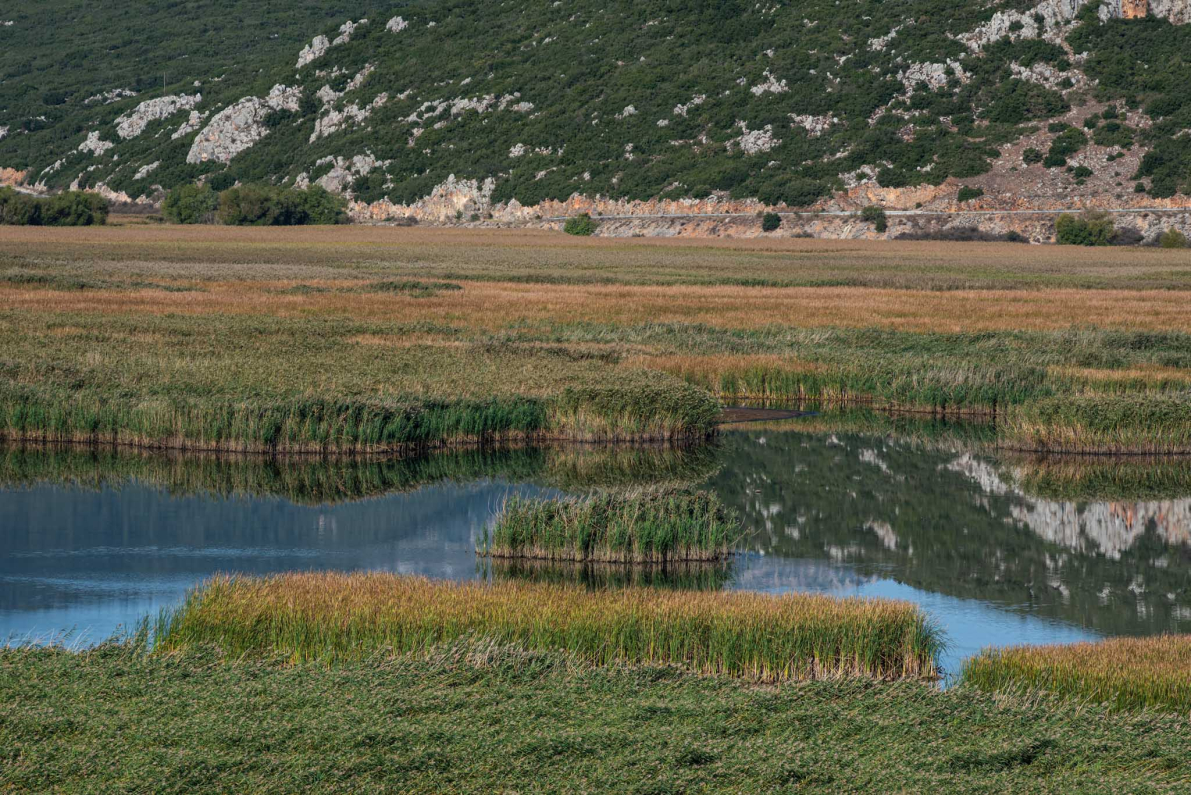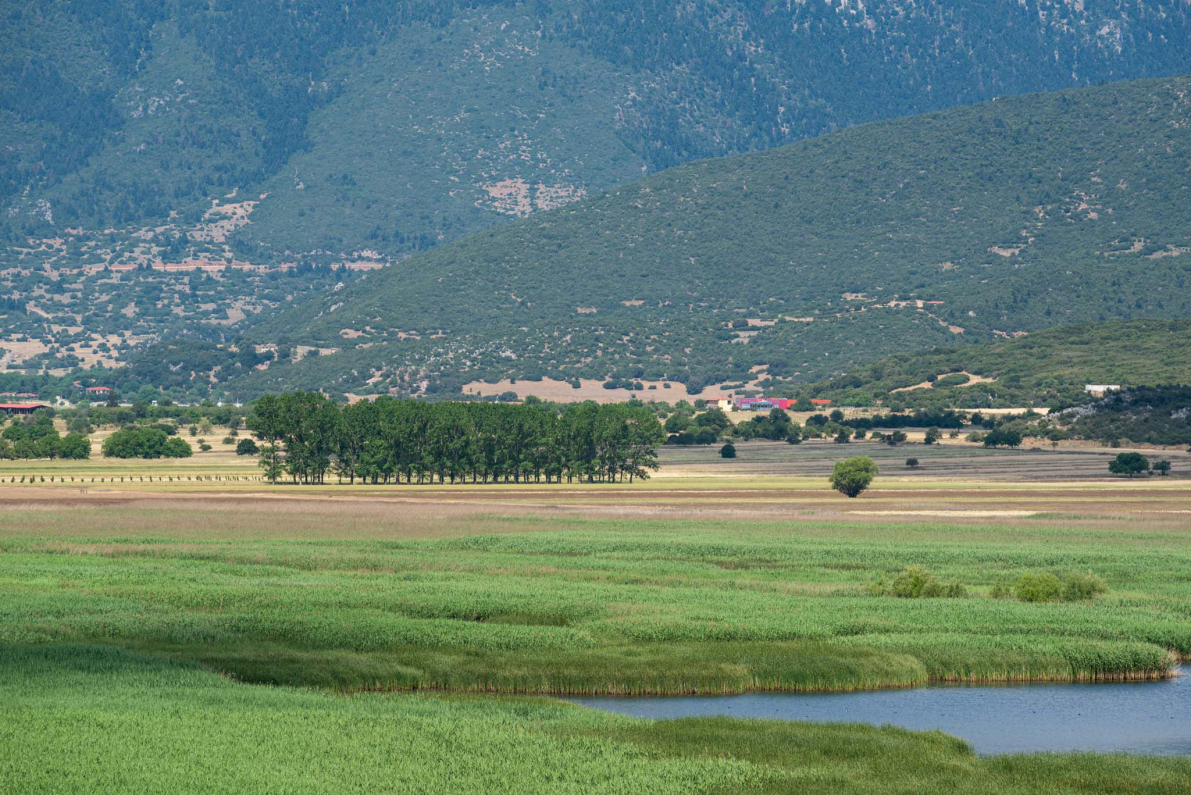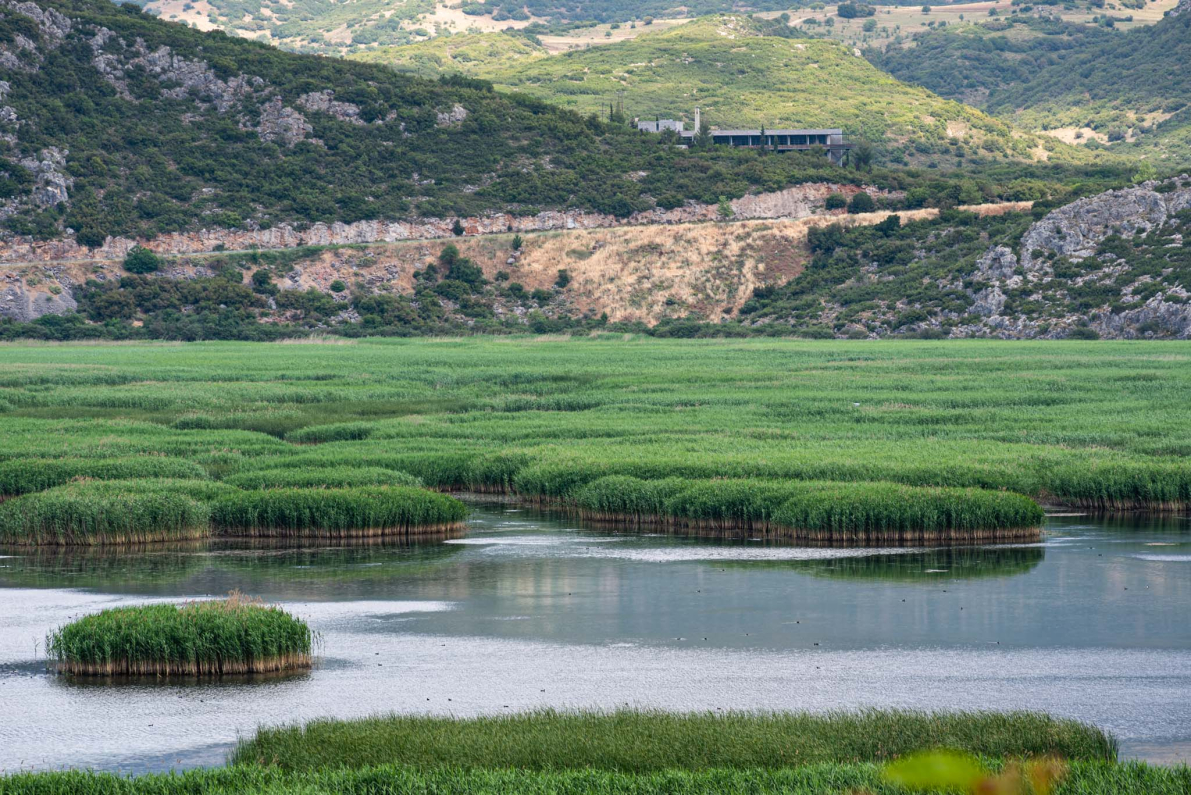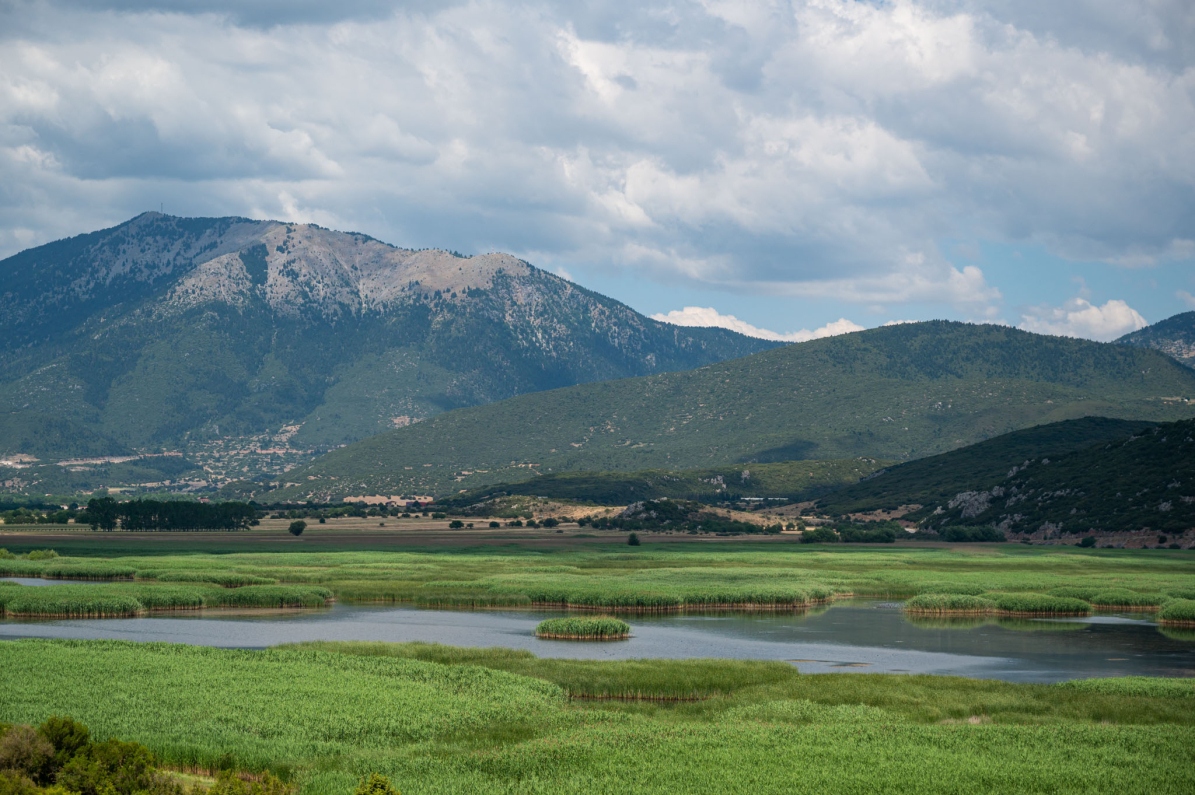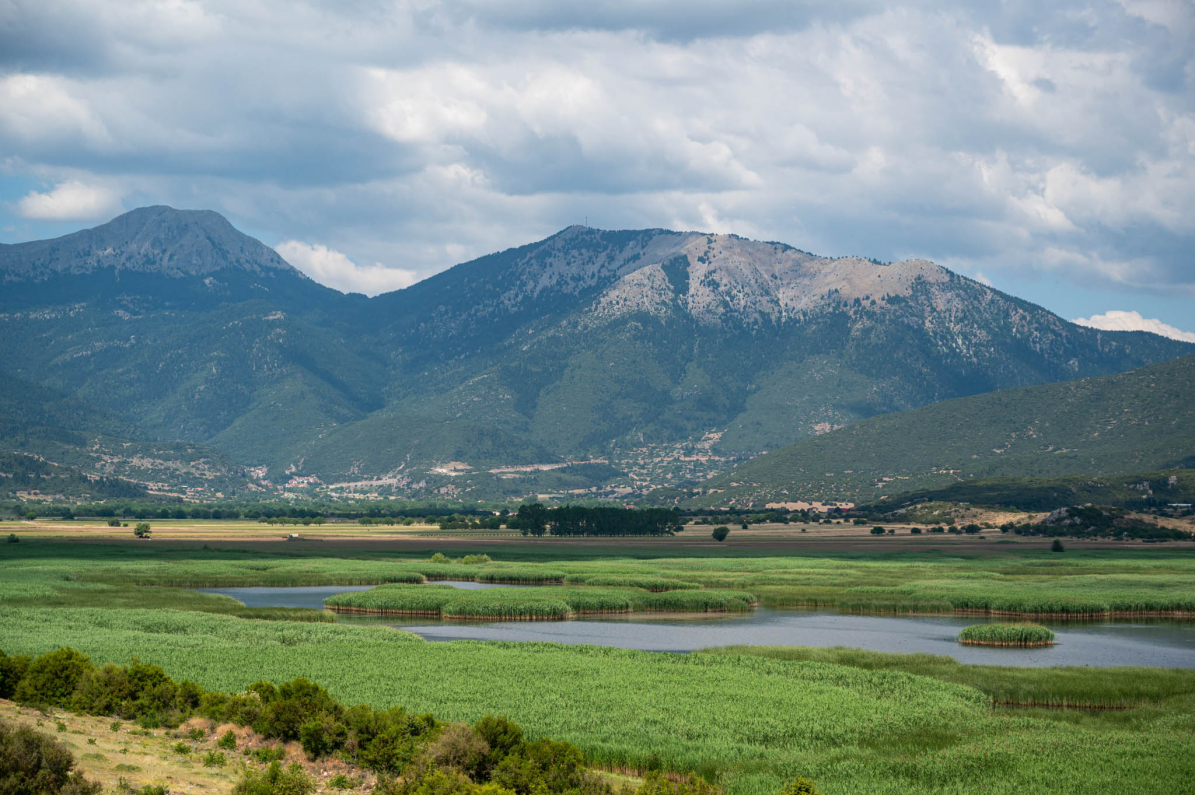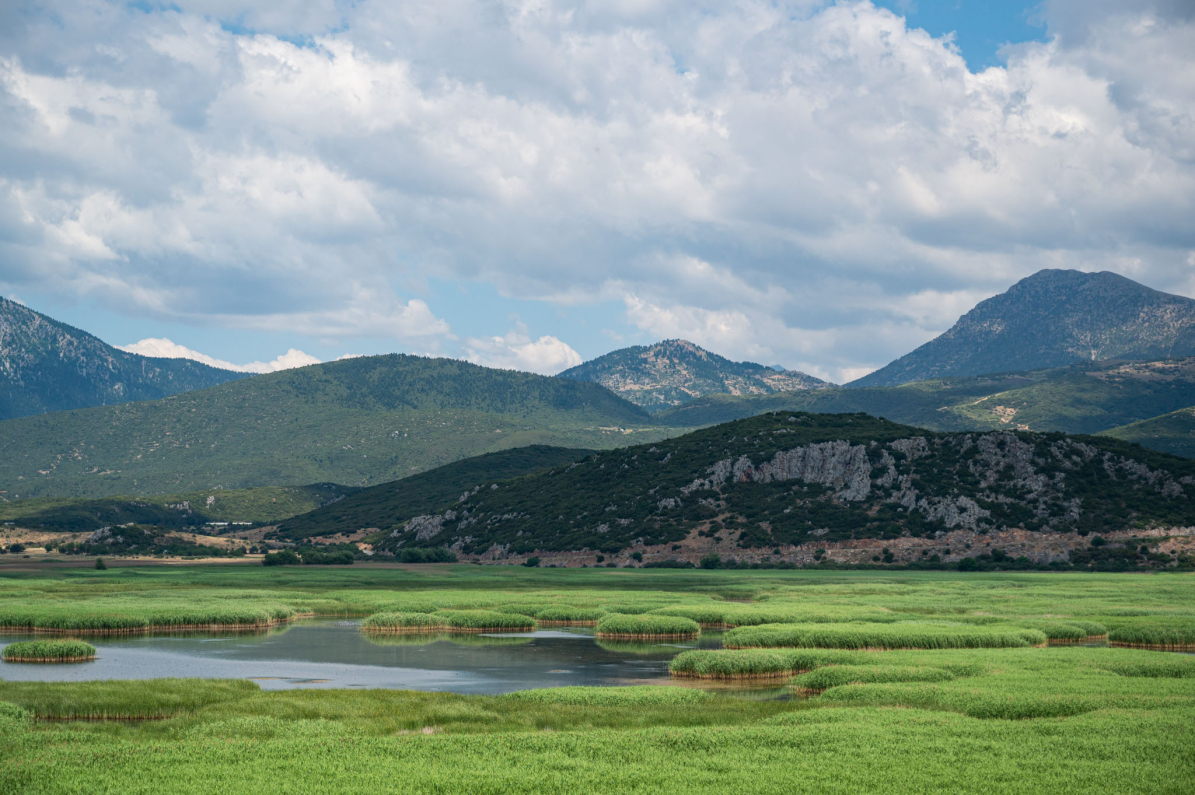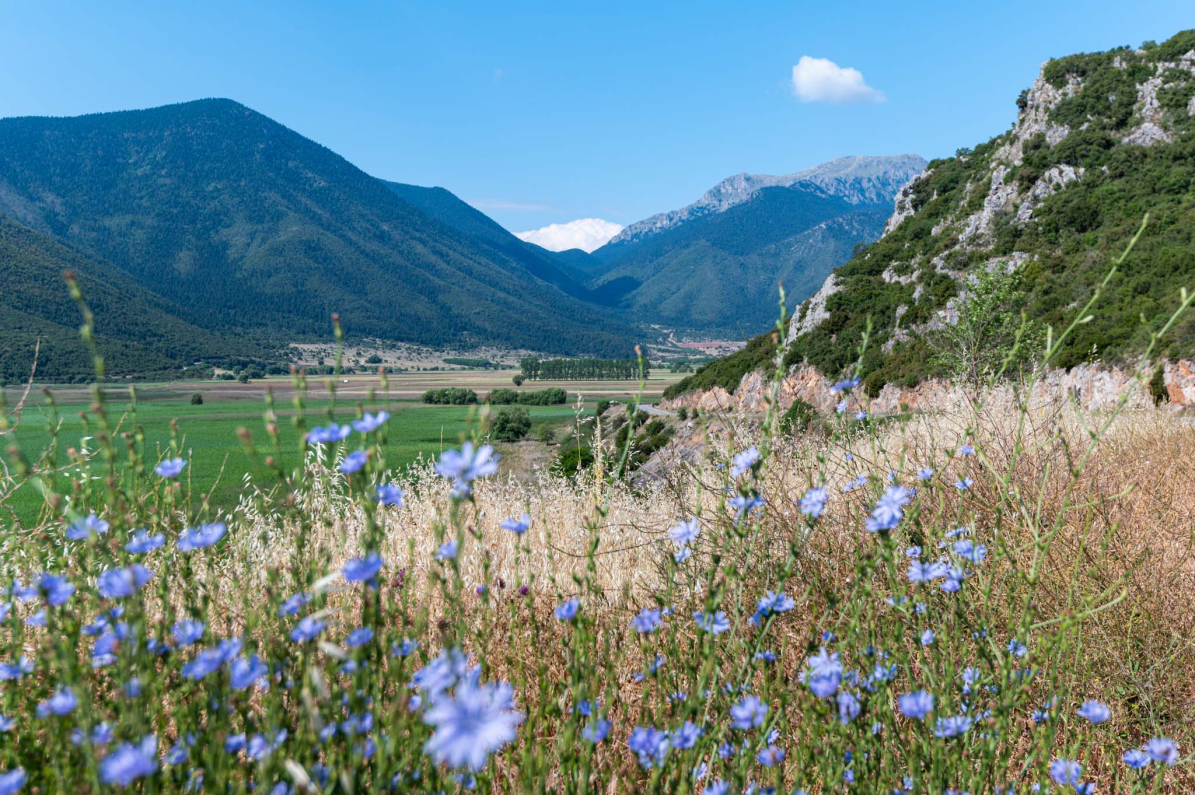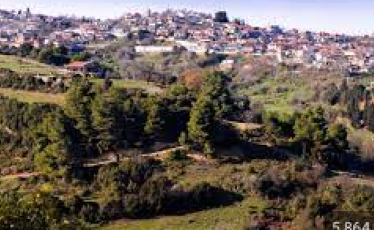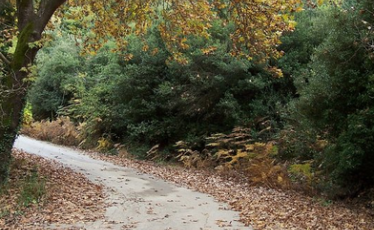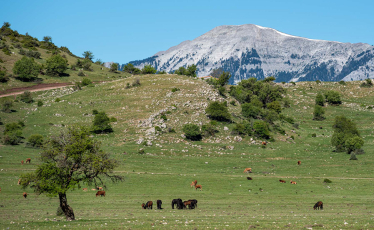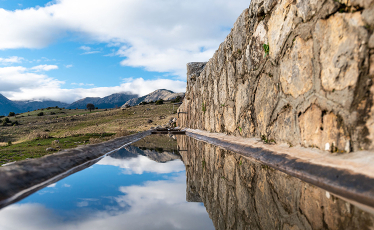Lake Stymphalia is a body of water known to many thanks to the sixth labor of Hercules, the Stymphalian Birds, one of the hero’s most famous feats. However, what might be less known is that today, this lake is the southernmost mountain wetland in the Balkans and one of the most important in Europe.
This marshy lake, known since antiquity, lies at an altitude of 600 meters, nestled between Mount Oligyrtos and Mount Ziria. Its waters drain through sinkholes, which channel them either to the Kefalari springs in Argolis or to the Skoteini Valley. The lake's water comes primarily from the Ziria aquifer, as well as the drainage of the Pellini plain through the Paparrigopoulos tunnel.
During the winter, the lake's surface area can reach up to 3.5 square kilometers, while its depth in areas permanently covered by water ranges from about 2 meters in spring to just half a meter at the end of summer.
According to mythology, the lake takes its name from Stymphalos, a local king and son of Elatos, who was greatly beloved by his people. Legend has it that Stymphalos was treacherously murdered by Pelops when the latter sought to conquer the region. The gods' anger over this unjust death caused a devastating drought and barren lands, which only ended when the pious Aeacus prayed for the region on behalf of the Stymphalians.
This lesser-known myth stands in contrast to the more famous story of the Stymphalian Birds, which Hercules faced as part of his sixth labor. The hero arrived at the lake to confront the man-eating birds with bronze beaks that hid in the dense lakeside vegetation, terrorizing the local inhabitants and their flocks. With the invaluable assistance of the goddess Athena, Hercules managed to drive the birds away for good, completing his task.
Today, the lake remains a vital haven for unique forms of life and is a protected area, included in the Natura 2000 network, covering an area of 12.83 square kilometers. It serves as a crucial resting and breeding ground for numerous migratory bird species, including the rare ferruginous duck. Other species finding refuge among its reeds include glossy ibises, herons, woodcocks, common sandpipers, rock thrushes, buzzards, short-toed eagles, and blue tits.
The lake's waters are also home to a unique endemic fish species, the Phoxinellus stymfalicious, which can survive the lake’s seasonal drying by burrowing into the thick layers of mud, forming a protective, slippery coating around its body. This species is considered endangered and is listed in the EU's "Red Book" alongside other vulnerable animals and plants from the area.
How do I get to the lake?
Take the Athens-Patras National Highway, exit at Kiato, head south, and after about half an hour, you will reach Lake Stymphalia.
What activities can one do at the lake?
Cycling around Lake Stymphalia.
Bird-watching, as the lake is a rare wetland, home to many migratory bird species, and a breeding site for several of them.
Stymphalia Lake Run: A cultural and athletic event, this half-marathon takes place every year at the end of May around Lake Stymphalia, starting at the Stymphalia Environment Museum. www.stymphalialakerun.gr
Hiking on the easy and well-marked trail (approximately 1.5 hours, 1.8 km) located directly across from the Stymphalia Environment Museum, where visitors can explore: the Acropolis Sanctuary of Ancient Stymphalos, the ancient city walls, the lake's shoreline, a bird observatory, the Agora with public buildings, and the residential area of ancient Stymphalos.

